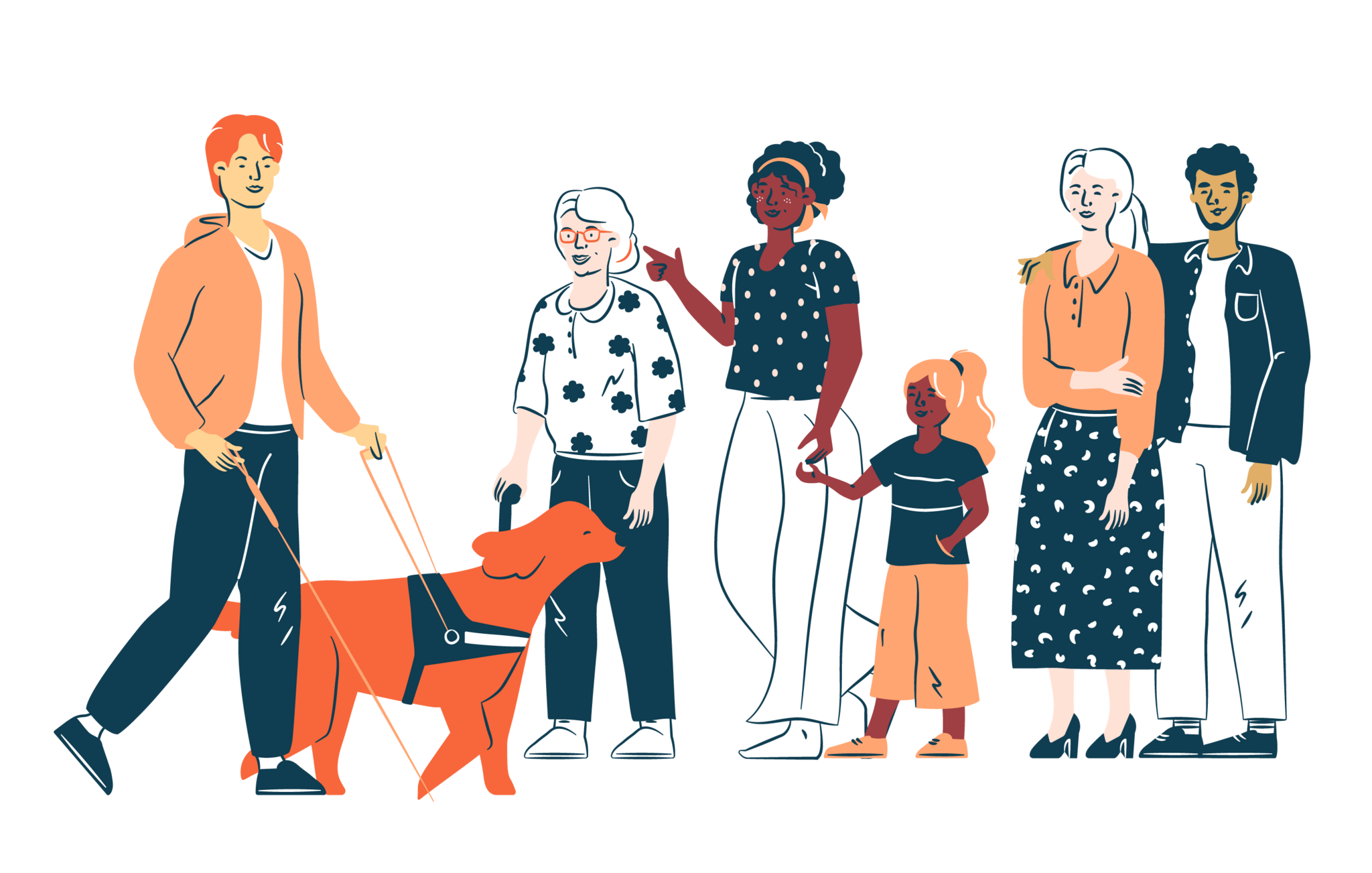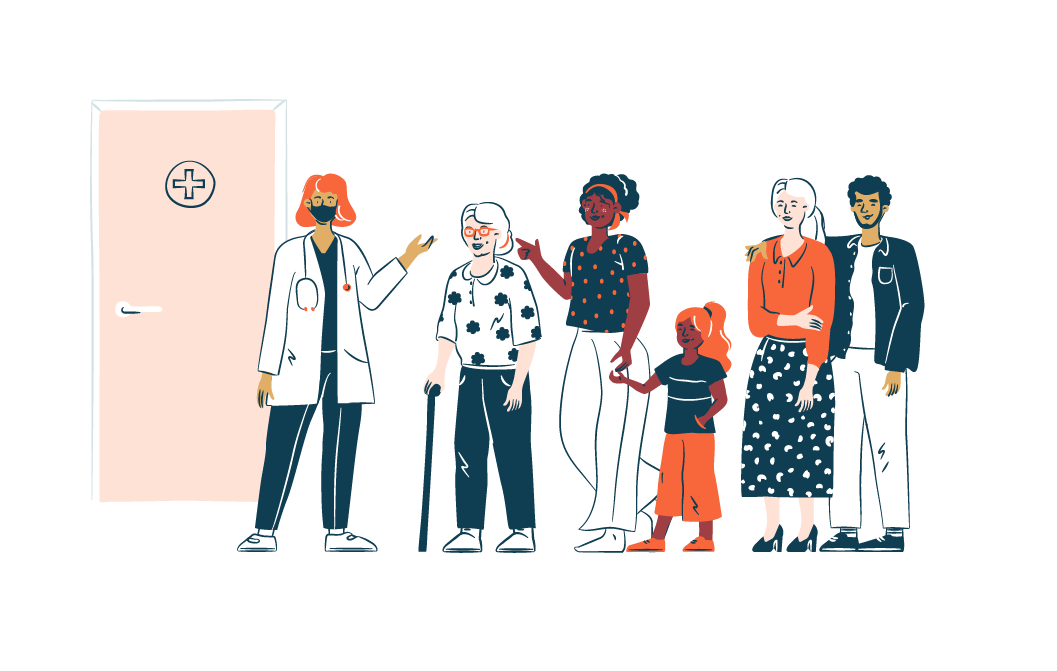Digitalisation as a cause and solution for psychological well-being and ill-being.
I recently had a personal discussion with a senior citizen. He is a tech savvy engineer who sees technology as a positive thing in general. However, this time he told me about his struggles with digitalisation, one with his Internet service provider, the other with his bank. His Internet provider had informed him that they weren’t sending bills through email anymore, which had been the customary way until then. He had difficulty setting up the payment in the newly required way. The experience was time consuming and cognitively stressful. He also noticed that his bank had started to charge an extra monthly fee for its services. After contacting the bank’s customer service line, he found out that only the bank’s mobile app users would not have to pay the extra charges. Thus, using the bank’s desktop Web service, which he was fluent with, was not enough anymore.
These two cases happened simultaneously and were related to necessities, Internet and banking, and neither case was his choice. Setting up the payment for the Internet provider took him several tries and about a month to resolve. Also, installing and signing up for the bank’s mobile app was stressful. It required external help and contacting customer service several times, including a face-to-face meeting.
It also became clear that the stress was continuous and affected his overall psychological well-being, as it took several weeks to resolve these issues. The cognitive stress actualised, for example, in the form of feelings of helplessness and frustration. In addition, the burden of learning new technology and trying to negotiate with the service providers caused him feelings of incompetence and loss of control related to his basic needs. It was not enough that he was fluent in using the traditional Web-based banking services and email; the push of digitalisation required him to learn even more. One could argue that you are never too old to learn. However, in these cases it was not his autonomous choice, but the push came from the companies that provided the services. Also, the experience might not have been so severe if there would have been the possibility to easily opt out of new requirements.
With this example, I want to highlight two things: one, digitalisation impacts people’s well-being more broadly than just during the direct interaction with it; and two, unequal power relations existing in digitalisation can have an impact on well-being. People who are part of digitalisation as end users have practically had to hand off the power of creating digitalisation to entrepreneurs, service providers, governmental organisations and IT consultants. Still, it is the ordinary citizens whose lives are penetrated by digitalisation. Basically, the only thing people can do is to trust that the promise of digitalisation creating a better world and life will actualise for them.
The discussion also brought into my mind a study Pew Research Center did a few years ago about the expected impact of digitalisation on well-being. The study concluded that digitalisation probably brings more positive than harm to people’s well-being in the future. The positive impacts included for example empowering people through nearly frictionless connection to services such as education and health services or helping to form meaningful social connections. However, about one-third of 1,150 expert respondents of the study thought that digital life is mostly harmful to well-being due factors such as increasing need for cognitive capabilities, digital addiction, and digital duress (the combination of information overload, declines in trust and face to face skills, and poor user interfaces)[1]. Based on the results it was clear that digitalisation is a mixed blessing. Still, we should not back away from it but understand and design it better.
Because of the strong impact of digitalisation and the unequal power relations in creating it, I’d argue that it is of the utmost importance and ethically right for us who design and create the services to systematically aim at increasing well-being with digitalisation, not just promise and assume it will.
What is well-being exactly?
By understanding the building blocks of well-being, we have better possibilities to design services that support it. For example, the Organisation for Economic Co-operation and Development (OECD), whose goal is “to build better policies for better lives,” measures well-being through variables such as wealth, housing and safety [2]. Another example of this is Yale’s most popular course, The Science of Well-Being, which goes into an individual’s well-being and gives practical tools for personal happiness (e.g., savoring moments and calling a friend), which are important approaches to improving well-being. Also United Nations Sustainable Development Goals (SDG) includes health and well-being as one of its 17 goals, targeting to factors such as universal health coverage.
However, to help a designer and developer understand his or her role in people’s well-being, I believe it is necessary to find something that can grasp the impact of technology (e.g., a chat bot, job search service, or e-learning) on an individual’s well-being in a holistic but still practical and valid way. Maybe science could help?
Competence, autonomy and relatedness as building blocks of psychological well-being
Recently, the human—computer interaction research community has been active around the subject of well-being [3]. Psychology research has also studied well-being for decades. Next, I will very briefly go through one psychology-based theory, Self-Determination Theory (SDT), and some ways to apply it to help design for well-being. Richard Ryan’s and Edwards Deci’s SDT, is a theory about how people’s basic needs affect their motivation and well-being. In recent years, it has become acknowledged and applied in many contexts such as work, education and health, and seems to have potential to offer practical implications for the design of digital services as well. One of SDT’s achievements has been finding three basic psychological needs that are the building blocks of well-being: competence, autonomy and relatedness. [4]
The three building blocks are described as follows:
- competence is described as feeling able and effective,
- autonomy is described as feeling agency and acting in accordance with one’s goals and values and
- relatedness is described as feeling connected to others and a sense of belonging. [5]
According to the theory, supporting those three needs is essential to people’s psychological well-being, and if they are not supported, they can reduce well-being.

Putting well-being science into practice in digitalisation design
Using a scientific psychology theory as part of design might sound complex. However, doesn’t need to be. I have used SDT as a tool to drive the concepting of digital services. The three basic needs work as lenses for inspiration and guide the concepting work to a more ethical and human-centric direction that supports well-being. We have applied these for example in projects where 1) mobile services were used to help unemployed people in their challenges with bureaucracy and job searching, and 2) digital services were used to help people to fulfil their goals related to lifelong learning. We asked questions like, “How could we support the feeling of autonomy in the user interface for someone who is starting her studies?” or “How could we support the feeling of competence of an unemployed person seeking a job?” This approach gave us guidance even before we had gathered any user research data. It could also be useful at the start of a project to ask a simple question: how will the anticipated result of this project affect people’s feelings of competence, autonomy and relatedness?
In addition, more in-depth ways of applying the basic needs exist. One such way can be to use them to formulate questions for user studies where people are interviewed about their experiences with certain technology. (These kinds of user studies are the bread and butter of service design and user research.) This gives an understanding of how the user perceives that the service or product has affected his or her well-being and provides us insight of how to iterate the design.
Understanding the impact of digitalisation on well-being
Although innovating and creating digital services is often a complex process with a myriad of stakeholders, conflicting interests and resource restrictions, I believe most of us want to make the world better. At Gofore, we want to live up to our promise of “Pioneering an ethical digital world.” In my earlier post I discussed about the importance of understanding the impact of design from societal perspective. Here I tried to zoom in and focused on the psychological well-being. Both of these texts work as material and food for thought to build our ethical capability and a step forward to a more ethical digital world.
Next time you can make decisions about a digitalisation project, I encourage you to think digital well-being. Do not be satisfied only with user stories or usability heuristics, or only require a specific back-end technology. Instead take a more ethical, inclusive and human-centric approach and design systematically for psychological well-being.
In case you found this interesting but want some help to take things forward, let’s discuss and create ethical digital together. We are always happy to help you!
Check also our related posts, such as Michelle’s post on UN’s sustainable development goals, Minna’s post about environmental sustainability, and Suvi’s post about values and ethics in design.
References
- Pew Research, 2018. The Future of Well-Being in a Tech-Saturated World. Available at: https://www.pewresearch.org/internet/2018/04/17/the-future-of-well-being-in-a-tech-saturated-world/ [Accessed 28.2.2022]
OECD. Measuring Well-being and Progress: Well-being Research. Available at: https://www.oecd.org/wise/measuring-well-being-and-progress.htm [Accessed 28.2.2022]
- Calvo, Rafael A., and Dorian Peters, 2015. Introduction to Positive Computing: Technology That Fosters Wellbeing. In Proceedings of the 33rd Annual ACM Conference Extended Abstracts on Human Factors in Computing Systems.
- Deci, E. L., and R. M. Ryan., 2000. The” What” and” Why” of Goal Pursuits: Human Needs and the Self-Determination of Behavior. Psychological Inquiry 11, no. 4 (2000): 227–68.
- Peters, Dorian, Rafael A. Calvo, and Richard M. Ryan., 2018. Designing for Motivation, Engagement and Wellbeing in Digital Experience. Frontiers in Psychology 9: 797.



